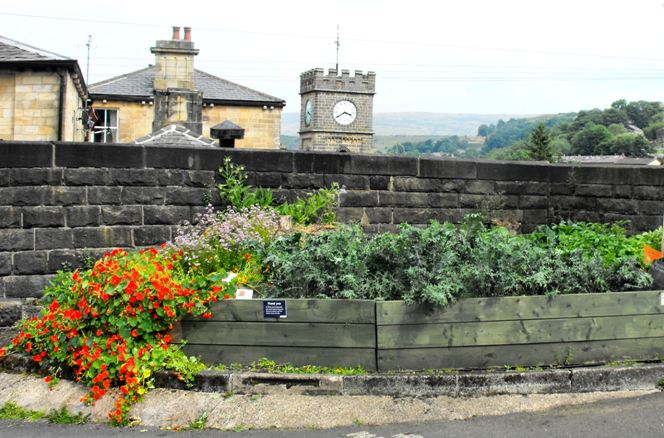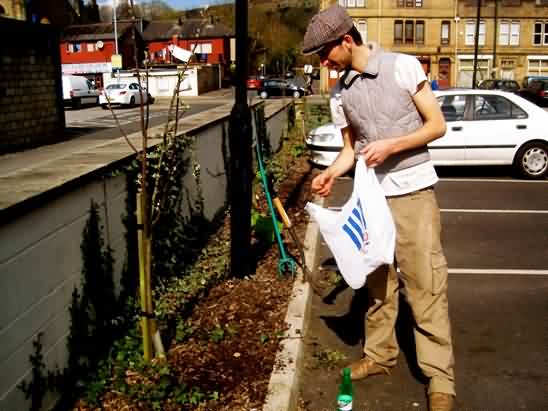Does community change require local government intervention? A group of volunteers in England would say no. Incredible Edible is changing the conversation around food in their community. The program began in Todmorden, England, a town of 15,000 people, with an experiment to change public spaces into edible landscapes.

Pam Warhurst, co-founder of the organization, outlined the brilliant revolution on the London TED Talk stage with a discussion entitled How We Can Eat Our Landscape.

Referred to as propaganda gardening, the Incredible Edible group transformed unused space in their town into an edible paradise. Dirt patches that served as nothing but eyesores now grow abundant vegetables and fruits free for the community. The volunteers dug up areas in front of the train station, the health center, and even the police station to plant food.
An interesting point to this experiment: they didn’t get permission from local government. “We’ve not asked anybody’s permission to do this, we’re just doing it,” said Warhurst. “And we are certainly not waiting for that check to drop through the letterbox before we start, and most importantly of all, we are not daunted by the sophisticated arguments that say, ‘These small actions are meaningless in the face of tomorrow’s problems,’ because I have seen the power of small actions, and it is awesome.”

Space that was underutilized now acts as a classroom for people young and old to learn about the food they consume. Children walk by vegetable patches on their way to school, mothers can pick ripe fruits to feed their family, and the community as a whole gains a purpose and a mission to re-imagine how they view their town.
“If you walk through an edible landscape, and if you’re learning new skills, and if you start to get interested in what’s growing seasonally, you might just want to spend more of your own money in support of local producers,” said Warhurst on stage.
Not only has the Incredible Edible experiment brought the community fresh vegetables and greener streets, but also it has energized the conversation and actions around buying local food. In addition to community gardens, the organization handed out signs to local producers and shops, telling people what was available locally. They created walking maps to assist shoppers in finding and purchasing produce and products that were grown in the area.

As a side effect of the experiment, 49 percent of local food businesses in Todmorden reported that their bottom had increased as a result of the efforts of Incredible Edible.
Warhurst concluded, “through an organic process, through an increasing recognition of the power of small actions, we are starting, at last, to believe in ourselves again, and to believe in our capacity, each and every one of us, to build a different and a kinder future.”
I highly recommend watching the whole story here.
Do you think something like this could happen in your town? I have seen a lot of underutilized space in Reno.
Let me know what you think in the comments below.

One thought on “Growing Food in Public Spaces”